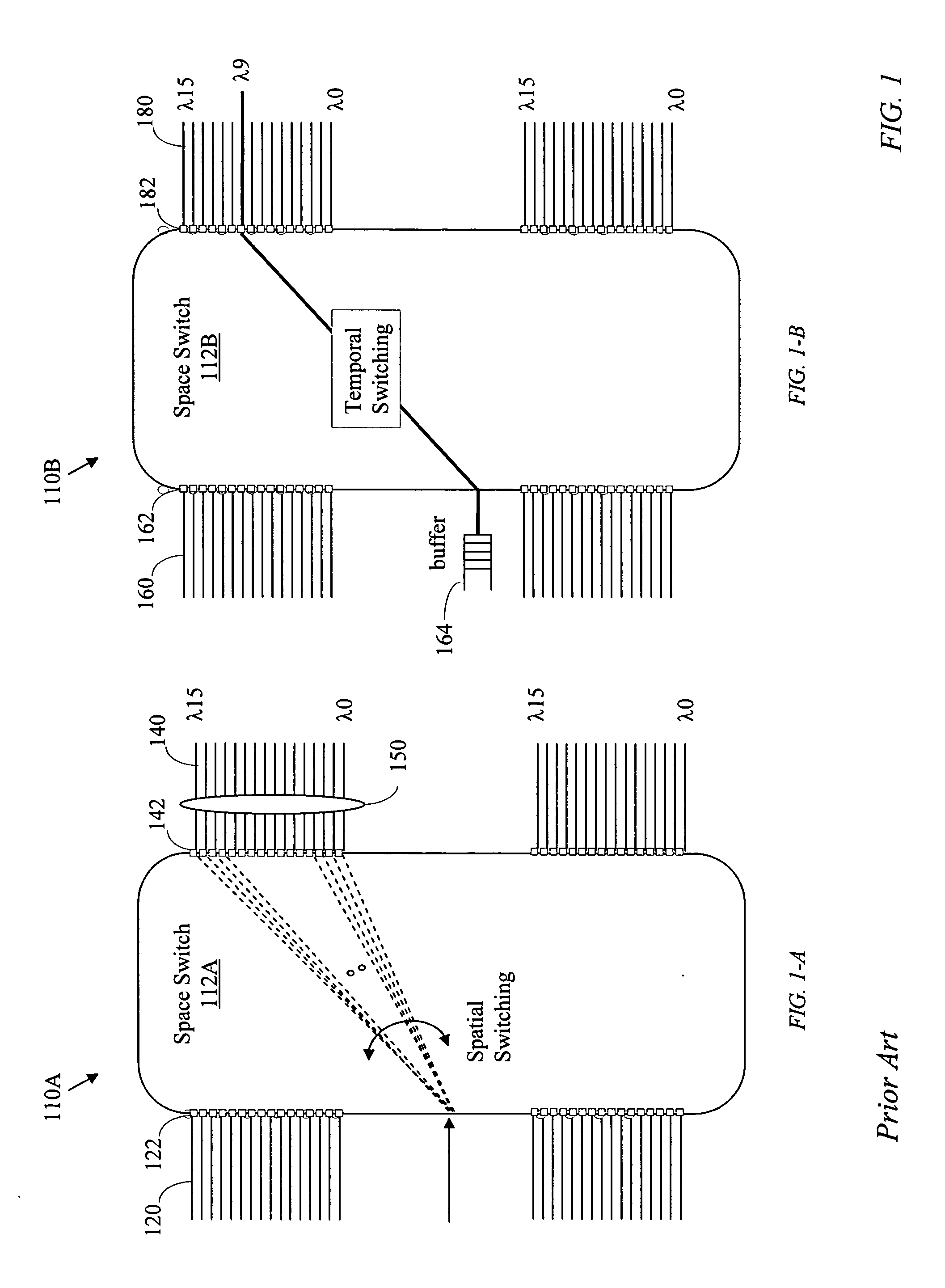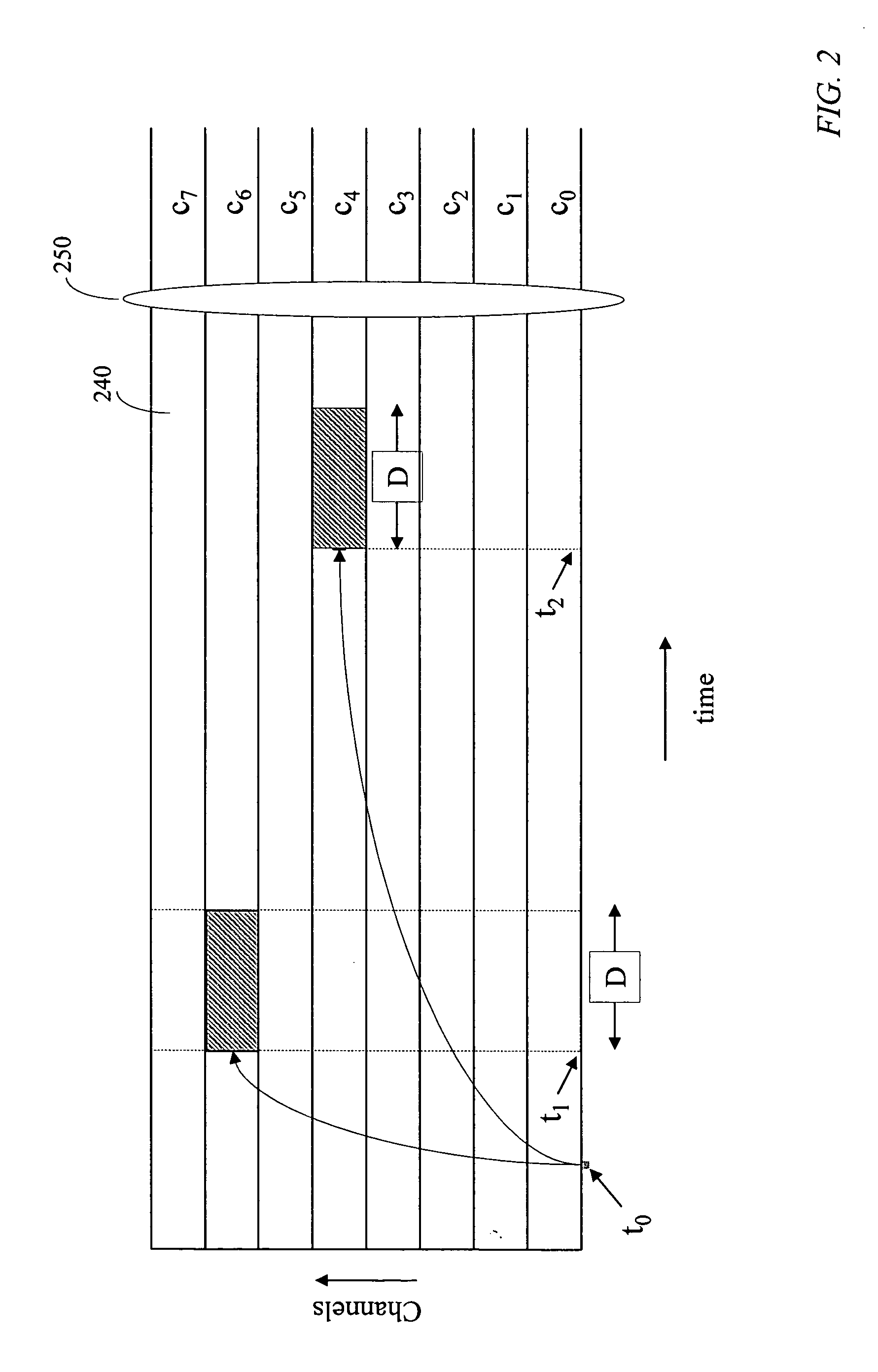Temporal-spatial burst switching
a burst switching and spatial technology, applied in data switching networks, frequency-division multiplexes, instruments, etc., can solve problems such as burst loss, and achieve the effect of extending the coverage of a time-shared fast-switching bufferless-core network and reducing the mean number of hops
- Summary
- Abstract
- Description
- Claims
- Application Information
AI Technical Summary
Benefits of technology
Problems solved by technology
Method used
Image
Examples
Embodiment Construction
[0054] The terminology used in describing the embodiments of the invention is listed below.
[0055] Edge node: A switching node having subtending (directly connected) information sources and sinks (also called subtending traffic sources and sinks) and connecting to other nodes is called an edge node.
[0056] Source node: An edge node transmitting signals, received from subtending traffic sources, to other nodes is called a source edge node, or a source node.
[0057] Sink node: An edge node receiving signals from other nodes, for delivery to subtending traffic sinks, is called a sink edge node, or a sink node.
[0058] Core switch: A switching node connecting only to other switching nodes, which may be edge nodes or core switches, is called a core switch. A core switch does not connect directly to traffic sources and sinks.
[0059] Shell switch: A core switch receiving signals directly from an edge node is called a shell switch.
[0060] Composite-star network: A network comprising a set of ...
PUM
 Login to View More
Login to View More Abstract
Description
Claims
Application Information
 Login to View More
Login to View More - R&D
- Intellectual Property
- Life Sciences
- Materials
- Tech Scout
- Unparalleled Data Quality
- Higher Quality Content
- 60% Fewer Hallucinations
Browse by: Latest US Patents, China's latest patents, Technical Efficacy Thesaurus, Application Domain, Technology Topic, Popular Technical Reports.
© 2025 PatSnap. All rights reserved.Legal|Privacy policy|Modern Slavery Act Transparency Statement|Sitemap|About US| Contact US: help@patsnap.com



